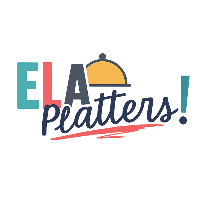What Is the XL NYT Crossword?
The New York Times crossword has long been a cultural icon, but the XL version? That’s the ultimate challenge. XL stands for “Extra Large,” and it’s not just about size—it’s about brainpower, patience, and the thrill of decoding the toughest clues out there.
Origins of the New York Times Crossword
The first NYT crossword was published in 1942. Since then, it’s become a daily ritual for millions. Over time, themed puzzles and Sunday specials have evolved, paving the way for larger formats—hence the birth of the XL edition.
What Makes the XL Version Special?
More clues, more squares, and significantly more complexity. These puzzles often feature intricate themes, obscure references, and layered wordplay. It’s not just solving a puzzle—it’s surviving a brain marathon.
The Rise of Crossword Culture
Crossword Puzzles in Pop Culture
From movies like Wordplay to sitcom jokes, crosswords have entered the mainstream. Even celebrities like Bill Clinton and Jon Stewart have admitted to being addicted.
The Digital Shift and Online Solving
With apps and the NYT Crossword subscription, solving has become more accessible than ever. No longer are you limited to Sunday papers—you can carry puzzles in your pocket.
Inside the Mind of an XL NYT Crossword Enthusiast
Traits of a True Crossword Lover
Patience, curiosity, a love of words, and a slightly obsessive streak. Enthusiasts often have a knack for trivia, a taste for wordplay, and an inner nerd that beams with pride.
Why People Love the XL Challenge
There’s a satisfaction that comes from filling in that last box on a colossal grid. It’s like completing a marathon—you don’t just finish, you conquer.
Benefits of Solving XL NYT Crosswords
Mental Stimulation and Brain Health
Numerous studies show that puzzles help delay cognitive decline and keep the mind sharp. The XL version? It’s a mental gym workout.
Vocabulary Expansion
Words like “AARONIC” or “ETUI” might not pop up in conversation, but they’ll make you a Scrabble champion.
Stress Relief and Mindfulness
Solving engages the brain just enough to distract from stress, but not so much that it feels like work. It’s meditative in the best way.
How to Start with NYT XL Crosswords
Finding the Puzzle
These typically appear on Sundays or in special editions. A subscription to the NYT Crossword service gives full access.
Tools and Resources for Beginners
Start with the NYT Crossword app, check forums like r/crossword, and use tools like XWord Info to study past puzzles.
Strategies and Tips for Tackling XL NYT Crosswords
Start with the Easy Clues
Scan the grid for gimmies—names you know, familiar phrases, or three-letter fill-ins. Build outward from there.
Use the Theme to Your Advantage
Many XL puzzles revolve around a central theme. Identify it early, and clues will start making more sense.
Common Crossword Clue Tricks
Watch out for puns, misdirection, and double meanings. If the clue’s in quotation marks, it’s likely a spoken phrase.
Notable Constructors of XL Puzzles
Famous Names in the Crossword World
Will Shortz, Brendan Emmett Quigley, and Liz Gorski are just a few legends. Each has a distinct flavor—Shortz favors wordplay, while Gorski adds visual artistry.
Style Differences Between Constructors
Some like quirky humor. Others go for elegance. Over time, you’ll even start recognizing constructors by their clues.
Community and Events
Crossword Tournaments
Events like the American Crossword Puzzle Tournament bring enthusiasts together to compete, mingle, and nerd out.
Online Forums and Groups
From Facebook groups to Discord servers, there’s a thriving online crossword culture ready to welcome newcomers.
The Puzzle Behind the Puzzle: Crafting an XL Crossword
What Goes into Creating One?
It can take weeks. Constructors must balance symmetry, clue difficulty, and word choice—all while keeping things fun and fair.
Rules and Limitations
No two-letter words. Every square must be part of both an across and down answer. Oh, and no repeated clues!
Mobile vs. Paper: The Crossword Divide
Pros and Cons of Digital Solving
Digital lets you check answers and skip around. But purists say it lacks the tactile joy of paper.
The Romance of Pen and Paper
The scratch of pen on newsprint, the ink-stained fingertips—some solvers wouldn’t trade it for anything.
Daily Rituals of Hardcore Solvers
Morning Crossword Routine
Coffee in one hand, pen in the other. Many make the puzzle part of their morning mindfulness routine.
Competing Against the Clock
Some aim to beat their personal bests, solving Monday puzzles in under 2 minutes and Sundays under 20.
Breaking Records: Speed Solving and Championships
The Fastest Solvers Alive
Solvers like Dan Feyer can finish even XL puzzles in jaw-dropping time. It’s a blend of pattern recognition, experience, and quick wit.
What It Takes to Compete
Practice, persistence, and a hunger for improvement. Plus, a love for the grind.
Fun Facts About the NYT Crossword
Longest Words and Cleverest Clues
“SUPERCALIFRAGILISTICEXPIALIDOCIOUS” once made it in. And clues like “Lead-in to LAX?” (RELAX) show just how punny things can get.
Crossword Easter Eggs
Constructors love hiding messages or tributes in puzzles. Keep your eyes peeled!
Crossword Lingo Every Enthusiast Should Know
-
Natick – A clue/answer pair so obscure, you just have to guess.
-
Rebus – A square with multiple letters.
-
Fill – The words that go into the grid.
-
Theme – The central idea connecting some of the answers.
-
Crosswordese – Overused short words like “ERA” or “ONO.”
Conclusion
Becoming an XL NYT crossword enthusiast isn’t just about solving puzzles—it’s a lifestyle. It sharpens your mind, grows your vocabulary, and connects you to a community of fellow word nerds. Whether you’re solving in ink, on a tablet, or battling the Sunday beast with a cup of coffee by your side, one thing’s for sure—you’re never bored.

